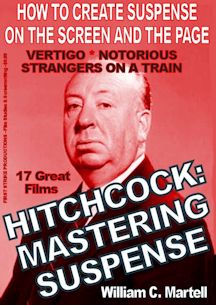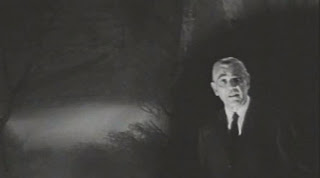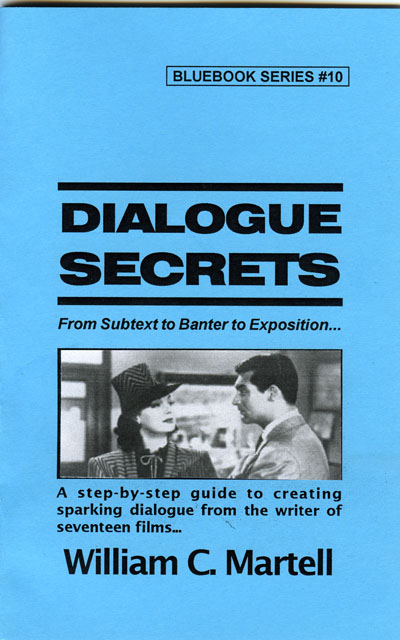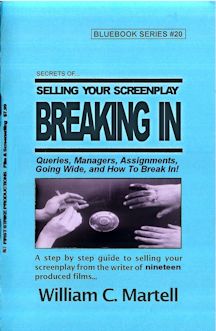Screenplay: Brian Moore.
Starring: Paul Newman, Julie Andrews, Lila Kedrova, Tamara Toumanova, Wolfgang Kieling.
Director Of Photography: John F. Warren (a HITCHCOCK PRESENTS DP who also worked on THRILLER).
Music: John Addison.
Hitchcock's *other* Cold War movie (I'm not counting NORTH BY NORTHWEST - which uses the Cold War as a backdrop but isn't really about the Cold war) is much better than TOPAZ, but still a lesser Hitchcock film. As I've probably said before, despite the insistence of critic Robin Wood that the 60s films were Hitchcock's best, mostly they are disappointments with a good scene or two - Hitchcock was believing his press and coasting. Though Hitchcock hated having the studio stick him with big movie stars like Paul Newman and Julie Andrews, they are part of what makes this film a hundred times better than TOPAZ. The film has a few cool shots, one great scene, and some other scenes that are okay. It's a watchable film, Hitchcock’s 50th film.
Nutshell: TORN CURTAIN is about a top nuclear scientist Michael Armstrong (Paul Newman) who attends a conference of atomic scientists in Denmark with his fiancé and assistant Sarah Sherman (Julie Andrews). Michael was working on the “Gamma Missile Program” which is top secret... but the government cut his funding. Michael seems distant and secretive and she thinks he may be up to something strange - perhaps having an affair - and she starts to follow him and spy on him. In the mix is a creepy East German scientist Karl who also seems to be following Michael around town. Sarah spies Michael picking up a plane ticket at the concierge desk and she asks him about it. He tells Sarah that he plans to skip the rest of the conference and fly to Stockholm, where he’s been offered the funding to continue with his research. But Sarah discovers his plane ticket *wasn’t* to Stockholm... it was to Berlin in East Germany. Behind the Iron Curtain!
When Michael defects to East Germany, Sarah follows... and now Michael is stuck behind the Iron Curtain with her... protecting her and trying to keep her from discovering exactly what he is up to. Is he cheating on her with the enemy? Nope - he's actually faked his defection in order to get close to one of *their* Atomic Scientists and work with him long enough to find the answers the United States needs for the Gamma Missile Project. Only a nuclear scientist could get this information from another nuclear scientist: no spy would know what to ask. But once Michael has his information, not only does he have to escape from behind the Iron Curtain, he must get Sarah out as well... Michael ends up kind of like that spy stuck with the bureaucrat from Hitch's pitch - except she's his fiance as well. Michael must fulfill his mission *and* make sure the woman he loves doesn't get killed in the process.
Experiment: No big story experiment in this film... but Hitch mentioned in “Hitchcock/Truffaut” the difficulties he had working with method trained Paul Newman.
Hitch Appearance: In a hotel lobby with a baby on his lap.... Here it is on YouTube:
Score: This film is probably most famous for being the movie that resulted in divorce between the long-term team of Hitchcock and Bernard Herrmann. Hitch rejected his score, and hired John Addison.
Great Scenes: One of the greatest Hitchcock scenes is in this not so great movie - the murder of Gromek. Hitchcock thought movies make murder too easy - casual almost. When someone was killed on screen back then, they’d get shot, clutch their chest, and fall over dead. Since it was the 1960s, there was some blood... but not much. But even if you think about films today, the hero sprays a bunch of bad guys wit machine gun fire, there’s a blood squib, then they all fall over dead. It’s over in a second or two. That makes it look easy, and Hitchcock wanted to show how difficult it was to kill a man. This scene is intense, scary, messy, and makes the typical movie scene where the good guy kills the bad guy into a long and frightening experience.
Paul Newman’s scientist Michael is followed to his contact in the underground’s farm by East German Agent Gromek, and must prevent him from calling the police and having them all arrested. With a taxi driver waiting just outside te farmhouse, this must be a silent fight - they can’t use a gun and they can’t let Gromek use his gun. Newman knocks the gun from Gromek’s hand, the farmer’s wife grabs it, realizes it will make noise... and grabs a huge knife instead. But when she stabs Gromek, the blade breaks off inside him, and he’s *still* grappling with Newman. She hits him repeatedly with a shovel, and eventually he goes down... but he’s still very much alive. As Newman catches his breath, Gromek moves to his feet, opens the window to call for the Taxi Driver. Newman and the farmer’s wife, pull him away from the window and slam it closed... and Gromek proceeds to strangle Newman! This guy just won’t die! Eventually the farmer’s wife turns on the gas oven without lighting it, and they drag the fighting Gromek to the open oven door, stick his head inside... then have to hold him seemingly forever until he finally succumbs.
That is the single action or suspense scene in the first *88 minutes* of the film. The problem with this story is that the structure is all wrong: not much happens in Act One and Act Two, and then Act Three (the escape) is full of action scenes. Though there are some minor suspense scenes earlier, nothing that really gets the blood flowing! Small stuff like Sarah discovering his plane tickets and Karl the East German scientist helping Sarah find the bookstore. It’s all small potatoes stuff that’s not very exciting.
So Act Three is start and stop escape scenes... There is an overlong sequence on a bus trying to escape from East Germany that has a few tense moments. The bus is a fake, identical to the real bus, and filled with fake passengers, running 10 minutes ahead of the real bus. The problem is, the police are all over the place looking for Newman and Andrews by this time, and they are stopped and searched. Tension builds as the police check everyone’s papers, and we know Newman’s and Andrew’s papers are forged. After that bandits rob the bus... and the police decide to give the bus an escort! Now the police are *with them* the whole time, and the *real* bus is catching up to them! Some tension here... but the scene goes on four times longer than it should.
Other scenes - an escape from a research facility surrounded by police, an escape from the ballet - surrounded by police, an escape from the post office - surrounded by police... and for those of you who are fans of TOP SECRET, the bookstore scene! It’s always fun to see the exact scene parodied in a ZAZ film, and TORN CURTAIN has that scene. Somewhere in all of these escape scenes is an *endless* scene where they have coffee with an old East German woman who wants them to sponsor her moving to the United States... and an equally endless scene at the Post Office looking for a specific employee who is part of the underground... before the police surround the place. And if anyone can explain the reason why the ballerina *freeze frames* in the ballet scene, I'd love to hear it (yes, we get to watch a huge chunk of *ballet* in Act Three).
In my HITCHCOCK: MASTERING SUSPENSE book we look at the suspense scenes which all revolve around *escape* - and even though not all of them work, we look at how they *were supposed to work* or *could have worked* with lots of step-by-step information on how to make escape scenes work.
TORN CURTAIN is too long, not enough real suspense, and seems to have the scenes in the wrong acts - it doesn’t build to and ending as much as peter out to an end. Both Paul Newman and Julie Andrews seem way too low-key to make this work. Newman was a Method actor, and gives a quiet and realistic performance without any trace of personality... and Hitchcock relied on the personality of the actors to carry the characters. Working in the old studio system, where they cultivated exciting larger than life stars like Cary Grant and Jimmy Stewart, he seemed to struggle in the new gritty version of Hollywood. This film was made a couple of years after Cary Grant starred in the best of the Hitchcock imitations, CHARADE directed by Stanley Donen, and the same year Donen directed another Hitchcock homage ARABESQUE starring Gregory Peck in a story very similar to TORN CURTAIN. Though this is not Hitchcock’s best film by a long shot, it does have an interesting idea and is much better than TOPAZ.
- Bill

Of course, I have my own books focusing on Hitchcock...
HITCHCOCK: MASTERING SUSPENSE
LEARN SUSPENSE FROM THE MASTER!Alfred Hitchcock, who directed 52 movies, was known as the “Master Of Suspense”; but what exactly is suspense and how can *we* master it? How does suspense work? How can *we* create “Hitchcockian” suspense scenes in our screenplays, novels, stories and films?
This book uses seventeen of Hitchcock’s films to show the difference between suspense and surprise, how to use “focus objects” to create suspense, the 20 iconic suspense scenes and situations, how plot twists work, using secrets for suspense, how to use Dread (the cousin of suspense) in horror stories, and dozens of other amazing storytelling lessons. From classics like “Strangers On A Train” and “The Birds” and “Vertigo” and “To Catch A Thief” to older films from the British period like “The 39 Steps” and “The Man Who Knew Too Much” to his hits from the silent era like “The Lodger” (about Jack The Ripper), we’ll look at all of the techniques to create suspense!
Films Included: NOTORIOUS, SABOTAGE, STRANGERS ON A TRAIN, THE 39 STEPS, REBECCA, TO CATCH A THIEF, FRENZY, FOREIGN CORRESPONDENT, THE LODGER, THE BIRDS, TORN CURTAIN, SABOTEUR, VERTIGO, THE MAN WHO KNEW TOO MUCH (1934), THE MAN WHO KNEW TOO MUCH (1955), SUSPICION, and NUMBER SEVENTEEN. 17 Great Films!
Only 125,000 words!
Price: $5.99
Click here for more info!
OTHER COUNTRIES:
UK Folks Click Here.
German Folks Click Here.
French Folks Click Here.
Espania Folks Click Here.
Canadian Folks Click Here.
And....
HITCHCOCK: EXPERIMENTS IN TERROR

USA Readers click here for more info!
HITCHCOCK DID IT FIRST!
We all know that Alfred Hitchcock was the Master Of Suspense, but did you know he was the most *experimental* filmmaker in history?
Contained Thrillers like “Buried”? Serial Protagonists like “Place Beyond The Pines”? Multiple Connecting Stories like “Pulp Fiction”? Same Story Multiple Times like “Run, Lola, Run”? This book focuses on 18 of Hitchcock’s 52 films with wild cinema and story experiments which paved the way for modern films. Almost one hundred different experiments that you may think are recent cinema or story inventions... but some date back to Hitchcock’s *silent* films! We’ll examine these experiments and how they work. Great for film makers, screenwriters, film fans, producers and directors.
Films Examined: “Rear Window”, “Psycho”, “Family Plot”, “Topaz”, “Rope”, “The Wrong Man”, “Easy Virtue”, “Lifeboat”, “Bon Voyage”, “Aventure Malgache”, “Elstree Calling”, “Dial M for Murder”, “Stage Fright”, “Champagne”, “Spellbound”, “I Confess”, and “The Trouble with Harry”, with glances at “Vertigo” and several others.
Professional screenwriter William C. Martell takes you into the world of The Master Of Suspense and shows you the daring experiments that changed cinema. Over 77,000 words.
UK Folks Click Here.
German Folks Click Here.
French Folks Click Here.
Espania Folks Click Here.
Canadian Folks Click Here.






























